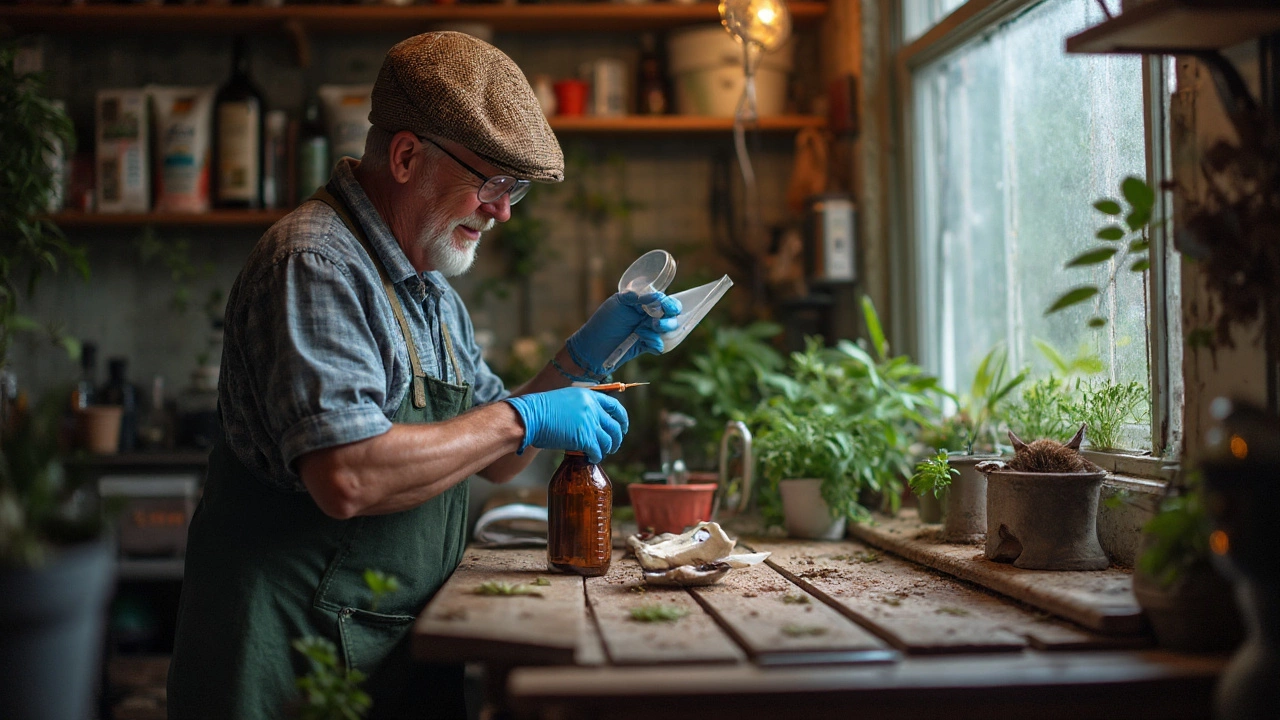Garden Pest Management: Easy Ways to Protect Your Plants
Got pests nibbling your veggies or flowers? You don’t need a chemical arsenal to fight them. A few simple steps can stop most bugs before they cause real damage. Below you’ll find the basics – what to look for, how to prevent problems, and which natural tools actually work.
Identify the Usual Suspects
First, know the common garden invaders. Aphids are tiny, soft‑bodied insects that crowd the undersides of leaves and suck out sap. You’ll see them as a fuzzy white coat or a greenish swarm. Slugs and snails love damp soil and love munching on seedlings, leaving ragged holes in leaves. Cabbage moth caterpillars chew large strips out of brassicas, while beetles can chew roots and stems.
Spotting trouble early saves a lot of work later. Look for wilting leaves, sticky residue (that’s honeydew from aphids), or odd holes in foliage. If you notice a sudden drop in fruit size or missing buds, it’s time to check the plant’s base and soil surface for hidden pests.
Natural Tools That Work
Once you know who’s invading, choose a natural solution that fits your garden style. Here are a few that most gardeners swear by:
- Companion Planting: Plant marigolds, nasturtiums, or garlic near vegetables. These scents repel many insects and can keep aphids away from tomatoes.
- Neem Oil Spray: Mix 1‑2 teaspoons of neem oil with a quart of water and a few drops of dish soap. Spray on leaves early morning or late evening. Neem disrupts insects’ life cycles without harming bees.
- Diatomaceous Earth: Sprinkle a thin layer around the base of plants. It’s a natural powder that scratches the exoskeleton of soft‑bodied bugs like slugs and beetles, causing them to dry out.
- Homemade Garlic or Chili Spray: Blend a few cloves of garlic or a hot pepper with water, strain, add a splash of dish soap, and spray on leaves. The strong smell deters many chewing insects.
- Hand‑Pick and Trap: For larger pests like slugs, go out at dusk with a flashlight and collect them by hand. You can also set out flat beer trays; slugs are drawn to the scent and drown.
All these methods are safe for kids, pets, and beneficial insects when used correctly. The key is to apply them regularly – most natural products lose effectiveness after rain or heavy watering.
Beyond direct pest control, keep your garden healthy to make it less inviting to bugs. Healthy soil holds water better, so plants can resist stress and stay vigorous. Rotate crops each year to break pest cycles, and remove plant debris that can hide eggs or larvae over winter.
Finally, keep an eye on the weather. Warm, damp spells often trigger a surge in slug activity, while dry heat can boost aphid populations. Adjust your spray schedule accordingly: more frequent neem applications in hot weeks, more diatomaceous earth after rain.
With a little observation and a few natural tools, you can keep pests at bay without reaching for harsh chemicals. Your garden will stay productive, and you’ll feel good knowing you’re protecting it in an eco‑friendly way.

Eco‑Friendly Pesticides That Work: Safe Options for Home Gardens and Yards
Practical, proven eco-friendly pesticides and how to use them safely. Clear picks, dosages, timing, and pet-safe tips so your garden thrives without harsh chemicals.
Read More